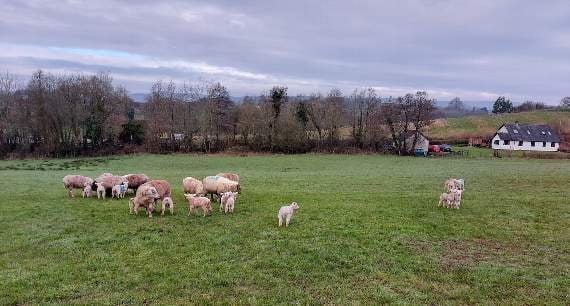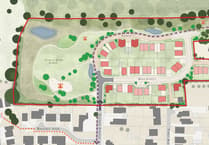Like most farmers, the bad weather has had a big effect on how we’ve done things this year, but with the weather improving we have now finally been able to crack on with one of the most important jobs in the lambing season – moving stock outside.
The nature of the recent storms has led to us keeping most of the flock in the lambing sheds far longer than usual, with it being important to ensure that any new-born lambs build up enough strength to cope with any adverse weather conditions. However when lambing starts and numbers start to build up in the shed, space becomes an issue and if possible it is best to move stock out as quickly as possible to prevent any disease. A well-conditioned ewe with plenty of milk and a set of strong healthy lambs are usually moved outside within a couple of days of lambing. Moving new-born lambs outside is a crucial stage in their development as the ewes return to grass and lambs have space to roam around. We inject the lambs for Pasturella at around three to four weeks old. This assists them to build up a strong immune system.
In the early stages after lambing, we keep new-born lambs in the shed to monitor their health and ensure that both lambs and ewes are in strong healthy condition before moving outside. Once satisfied that this is the case, we move bunches outside to the field next to the shed. By keeping them next to the lambing shed, we can keep a close eye on them in their first couple of days outside and it also enables us to easily move them back inside if there are any problems with their health or bad weather. To avoid too much stress for ewes and lambs, it is best to move the flock outside in small groups at a time. This helps ensure lambs do not get separated from their mothers and gives them more space to acclimatise to being outside with other sheep.
To maintain good condition in the ewes, we provide them with concentrate and fodderbeet on a daily basis. Moving back on to a diet of fresh grass will help with milk production but it is still important to provide them with as much food and energy as possible, which are provided by mineral buckets. After a couple of days outside, the eldest and strongest lambs can be moved further away from the lambing sheds to different fields to make room for the next batch of lambs as the process repeats itself over again.
Lambs will only be moved out of the lambing sheds and into the field if they are receiving plenty of milk from their mothers and whilst most ewes have a plentiful supply of milk by lambing time, this is unfortunately not always the case. Mastitis is the term for a bacterial infection of the udder. It is most common in ewes raising multiple lambs or with high milk production. Most cases occur during the first weeks after lambing or immediately before weaning. It is vitally important that lambs receive milk, especially in the first few days of being born. Over the next few weeks I will explain how we treat ewes with mastitis and also how we assist both ewe and lambs by feeding them bottled milk whilst the ewe is treated for mastitis.
If you have any questions on lambing please feel free to email me on [email protected] and I would be happy to help in anyway I can.





Comments
This article has no comments yet. Be the first to leave a comment.